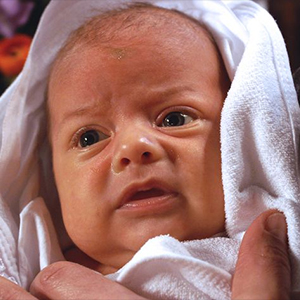
The December 17, 2015, issue of the Journal of Pediatric, Maternal & Family Health published a study documenting the case of an infant who was medically diagnosed with failure to thrive being helped with chiropractic.
The authors of the study describe failure to thrive (FTT) as infants who cannot maintain growth or have inadequate growth. The condition is fairly common affecting approximately 3-10% of children attending care in a hospital setting and 5-10% of children attended to in a primary care setting.
This may be due to disease, or not enough calories in the infant’s diet or even an infant that burns too many calories. The study reports that 80% of all cases have no known underlying medical conditions for the FTT.
Because of the lack of clear medical treatment, the study reports that many parents turn to alternatives such as chiropractic, in these situations.
In this case, a 5-month-old infant girl with a medical diagnosis of “failure to thrive” was brought to the chiropractor. The infant girl was also suffering with inconsolable crying, chronic diarrhea, and was dangerously underweight.
The infant’s mother reported that her daughter’s problems began at the age of two months when she was brought to the pediatrician for a stomach virus, oral thrush, and loose green stools. Medication was prescribed but was ineffective as the infant continued to suffer from green-colored diarrhea and weight loss for the next six weeks.
The problem worsened to the point that the medical recommendation to the infant’s mother was surgical insertion of feeding tubes into her child’s stomach. It was at this point that the mother decided to try chiropractic for her daughter.
A chiropractic examination revealed the presence of subluxations in the infant’s upper neck. Subluxations can cause interference to normal nerve function and have an effect on overall physiology. Chiropractic adjustments were begun to correct the subluxations and restore normal nerve function.
After the infant’s first chiropractic adjustment, her mother noted that her daughter slept several hours continuously, without waking up and crying. After the third adjustment, the child stopped the daily screaming, and her stools started to return to normal. After one week of care, the child had gained 2 oz. Each successive week, the child’s rate of weight gain continued to increase until the child had returned to a normal weight. A five-year follow-up showed that the child was normal, in good heath, and properly developed for her age.
In their conclusion, the authors wrote, ” This case report provides supporting evidence on the effectiveness of chiropractic care in infants with a failure to thrive. We encourage further research and theoretical development on this approach to patient care vis-a-vis the detection and removal of spinal subluxation.”
